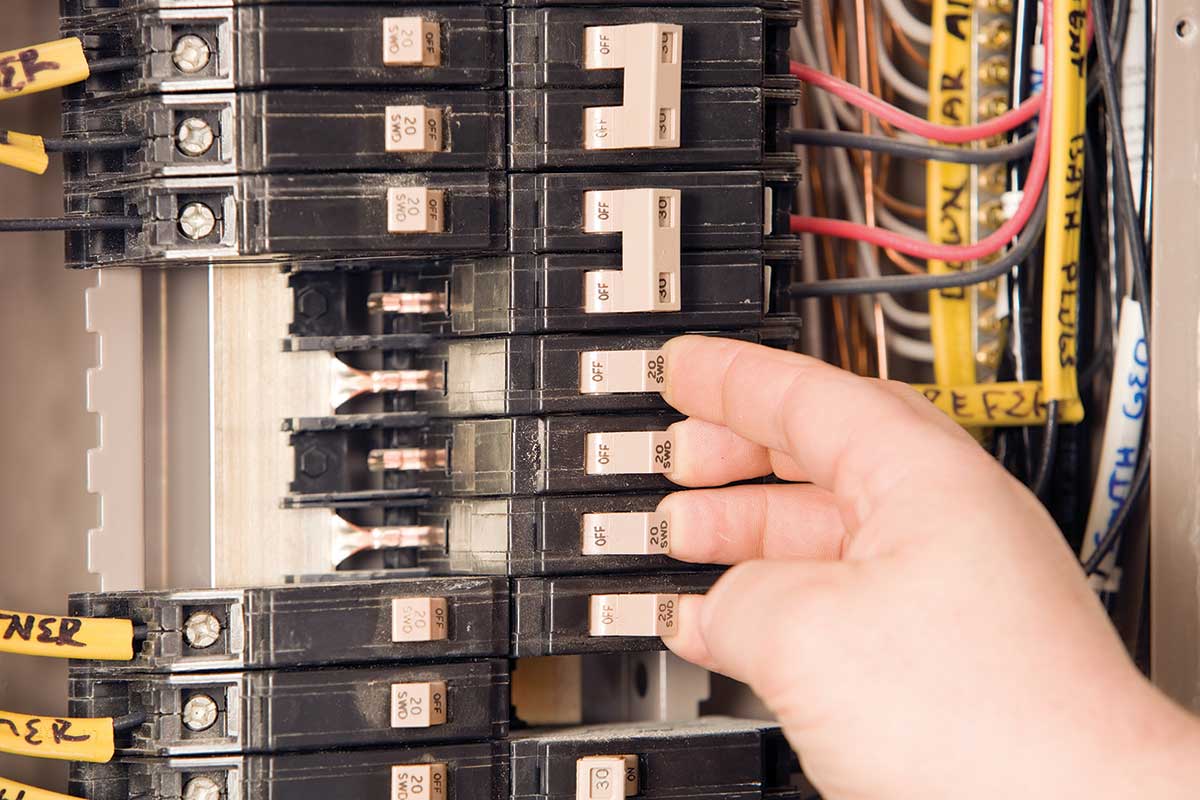We use electricity in our homes throughout the day, but we rarely think about how it gets to the wall outlets or switches.
Distribution lines bring electricity to homes and most commonly connect to a house through a service drop. The electricity goes through the meter box to the service panel, which is typically found on an outer wall or in the garage. The service panel, often called a breaker box, is where breakers and fuses protect the wires inside your house from electrical overload.
With so much electricity funneling out of the breaker box through the rest of the home to your outlets and switches, it’s important not only to know how to use a breaker box but also how to do so safely.
Here’s what you need to know about the breaker box safety features that you’ll find in the panel:
Main circuit breaker. This switch goes on and off to regulate the current flow. If an overload occurs because of a short circuit or because too many appliances are running at the same time, the circuit breaker will automatically trip to turn off the current flow. Breakers are subdivided into two categories.
Single-pole breakers: These single switches are typically between 15 and 20 amps, are found in most circuit breakers and can handle up to 120 volts.
Double-pole breakers: These breakers can have various amperages and can take on 240 volts. Double-pole breakers are made for large appliances such as air conditioners, water heaters, washing machines and stoves.
Arc-fault circuit interrupters. These breakers are specifically geared to produce additional safety measures against electrical fires and electrocution. Arcing faults can be triggered by overloaded circuits, damaged wires, cracked wire insulation, loose or improper connections, faulty electrical equipment, or overheated electrical wires. An AFCI monitors current flow and can distinguish between normal, working arcs and unwanted, dangerous arcs. When an unwanted arcing condition is detected, it shuts down the circuit immediately.
Subpanels. Subpanels are small breaker boxes geared to take on more circuits when you don’t have the space to contain new circuits.
Bus bars. The two rows in the main circuit breaker panel link up with hot bus bars. This is where the current flows from the main breaker to the dividing circuits and extends to the outlet.
If an appliance is malfunctioning, there’s another electrical malfunction in your home or the circuit breaker flipped during a power outage, it may be necessary to cut off or switch on the power at the breaker box. If you must flip a switch at the breaker box, always remember these safety tips:
• Turn off or unplug connected equipment.
• Stay a safe distance away from the panel.
• Don’t look directly at it.
• Shield your body in case an arc occurs.
• Don’t touch exposed conductors.
Never attempt to turn off power at the breaker box if you must stand in water to do so. If you touch the breaker box while wet or while standing in water, it could cause electric shock or death. If you cannot reach your breaker box safely, call your electric co-op to shut off power at the meter.
Be sure to call a qualified electrician if blowing fuses or tripping circuit breakers are a recurring problem. This means there is something wrong with your electrical system, and it needs to be inspected.
Labeling breakers makes it safer and easier to go right to the breaker you need rather than testing several.
Protect your breaker box from weather no matter where the box is. Water can corrode connections and cause problems. You can use a weatherproof box or get your panel professionally enclosed.


